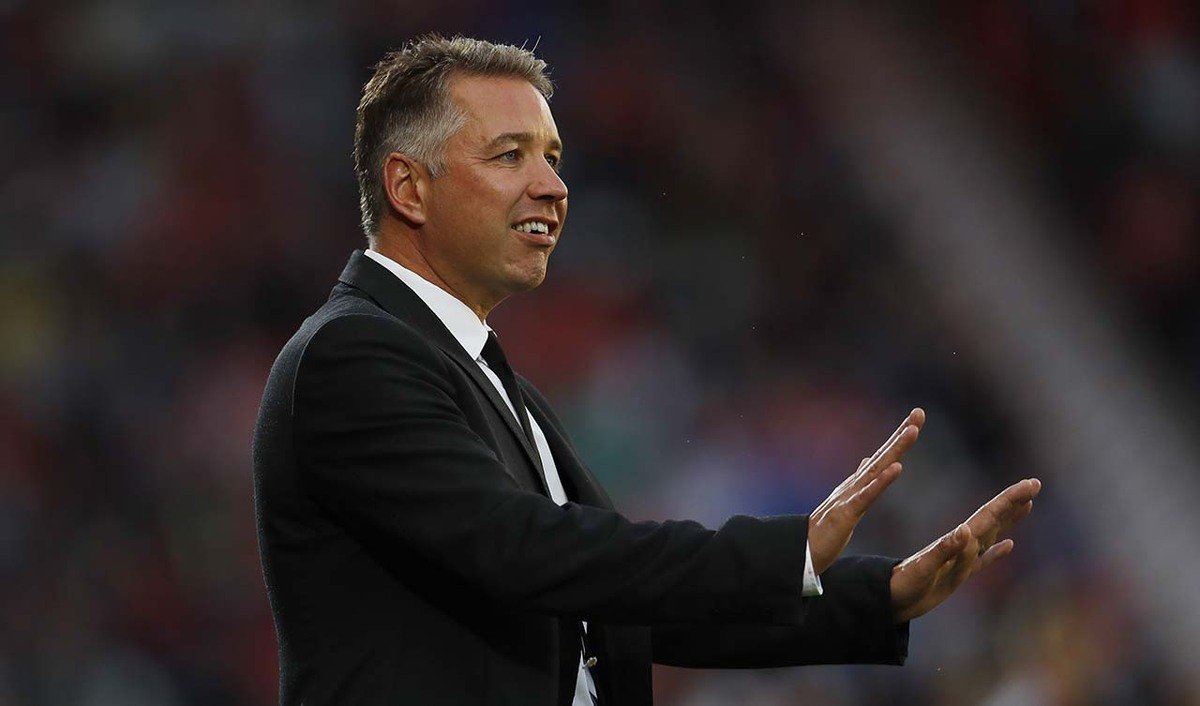You are viewing 1 of your 1 free articles
Rotation and movement
This session is about rotation and movement between players. Central to this is finding the spare man, with players knowing what to do with the ball when they have it. Awareness, movement, passing and communication are key.
| Area | Half pitch |
| Equipment | Balls, cones, goal |
| No. of Players | Full squad |
| Session Time | 20mins per phase |
This session is about rotation and movement between players. Central to this is finding the spare man, with players knowing what to do with the ball when they have it. Awareness, movement, passing and communication are key.
The practise forms an important part of how we want to play as a team, with frequent rotation of players and an emphasis on overloading areas of the pitch in order to find a spare player or players. This is a situation that happens a lot in games.
We know that good preparation pays off in matches. Against Ipswich Town in the npower Championship this season, we perfected a 4v2 overload in the centre of midfield, scoring five goals from this area in a 7-1 win.
What do I get the players to do?
Phase one
Inside a 20x20-yard area we play 4v4, though on each touchline there is a floater for each team. Starting in the middle, players have to pass as a four, then find a team mate on the touchline. A player who makes a pass outside the box has to swap positions with the receiver (1). Floating players on the outside can only play one-touch.
1
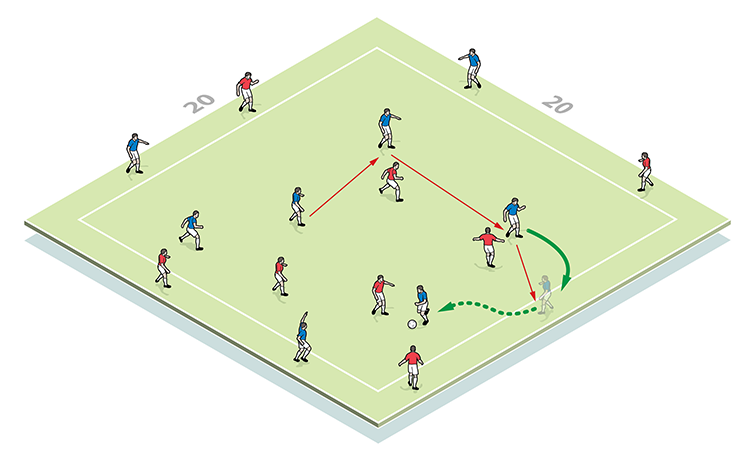
Phase two
This is now a half-pitch practice. Around the edge of the penalty area are four defenders and two strikers, while a 25x25-yard square on the halfway line contains four midfielders and three defenders.
The drill starts with a long ball from a defender in the area down the pitch into an opposition midfielder (2a). The defender now leaves play. Using their spare man in the box, midfielders have to make five passes. Three players then move out of the box, joining their team mates in a 5v3 overload, and looking to score (2b).
2a
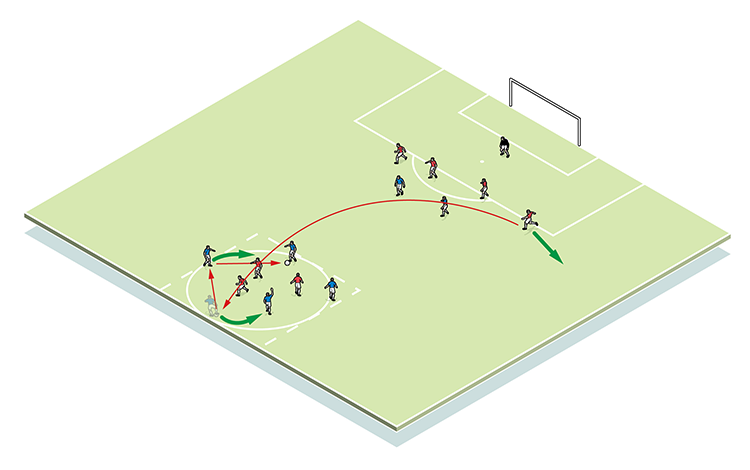
2b
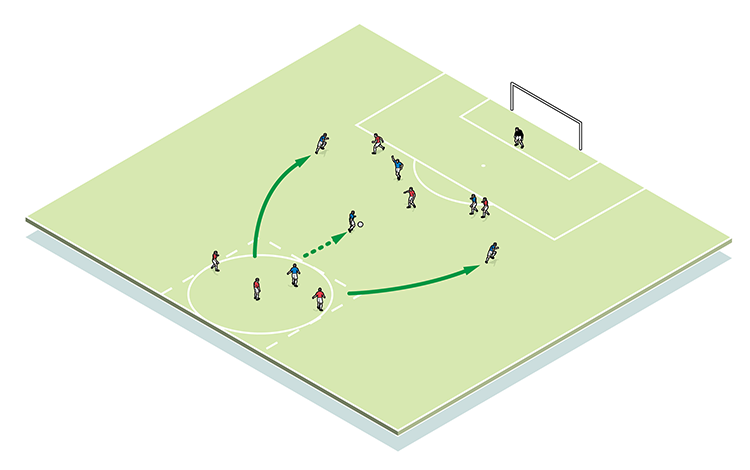
Whether a move ends in a goal or breaks down, play starts again with a defender on the edge of the penalty area, and we’ll frequently rotate players within positions.
Phase three
We progress the session by adding two defensive wide midfield players who can go in or out of the square, and two attacking full-backs, positioned either side of the 25x25-yard square. When the defender plays the first pass he now remains in position. If a defensive player moves into the square he can help his team by negating the overload (3a), but cannot move out, and leaves the attacking full-back unmarked (3b). If he stays out of the square, there remains an overload in the box. Box players must now make seven touches before releasing the ball.
3a
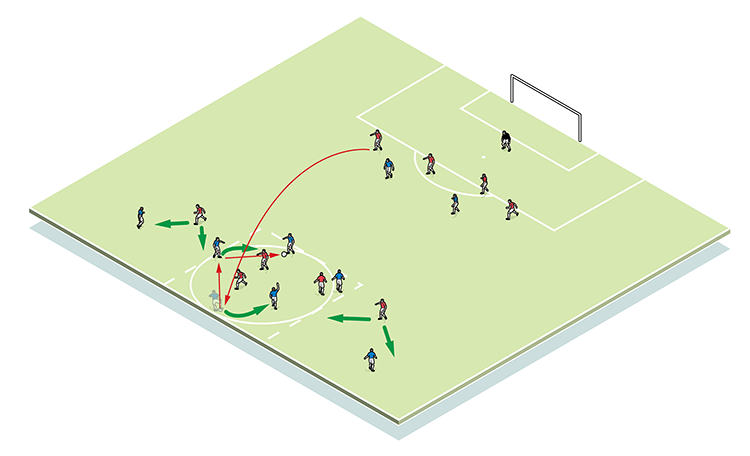
3b
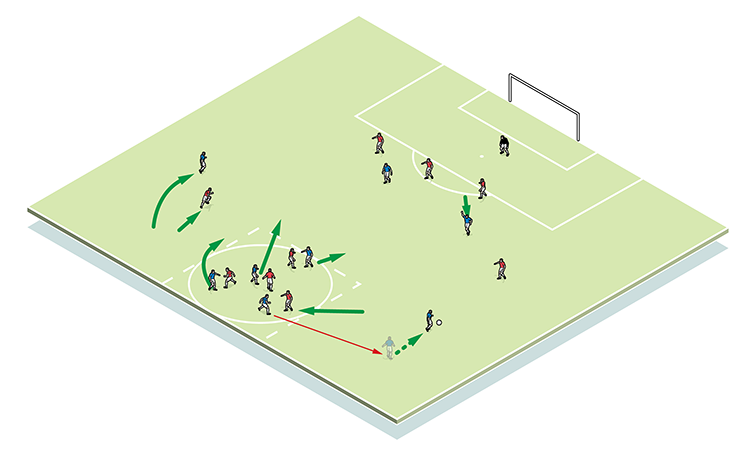
What are the key things to look for technically/tactically?
We want to see ambitious forward movement patterns (3c), awareness, communication, good passing ability, and an ability to be able to take the ball into tight areas playing one- and two-touch football. The session will break down if these things aren’t done well. We tell players to only ask for the ball when they have two or three options in their heads.
3c
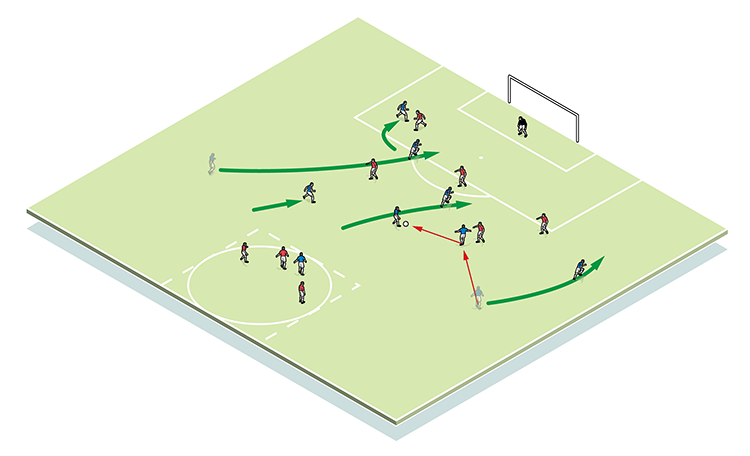
Related Files
Editor's Picks
Deep runs in the final third
Using the goalkeeper in build-up play
Pressing principles
Intensive boxes drill with goals
Penetrating the final third
Creating and finishing
My philosophy
Pressing initiation
Compact team movement
Coaches' Testimonials

Alan Pardew

Arsène Wenger

Brendan Rodgers

Carlos Carvalhal

José Mourinho

Jürgen Klopp

Pep Guardiola

Roy Hodgson

Sir Alex Ferguson

Steven Gerrard
Coaches' Testimonials

Gerald Kearney, Downtown Las Vegas Soccer Club

Paul Butler, Florida, USA

Rick Shields, Springboro, USA

Tony Green, Pierrefonds Titans, Quebec, Canada
Join the world's leading coaches and managers and discover for yourself one of the best kept secrets in coaching. No other training tool on the planet is written or read by the calibre of names you’ll find in Elite Soccer.
In a recent survey 92% of subscribers said Elite Soccer makes them more confident, 89% said it makes them a more effective coach and 91% said it makes them more inspired.
Get Monthly Inspiration
All the latest techniques and approaches
Since 2010 Elite Soccer has given subscribers exclusive insight into the training ground practices of the world’s best coaches. Published in partnership with the League Managers Association we have unparalleled access to the leading lights in the English leagues, as well as a host of international managers.
Elite Soccer exclusively features sessions written by the coaches themselves. There are no observed sessions and no sessions “in the style of”, just first-hand advice delivered direct to you from the coach.
